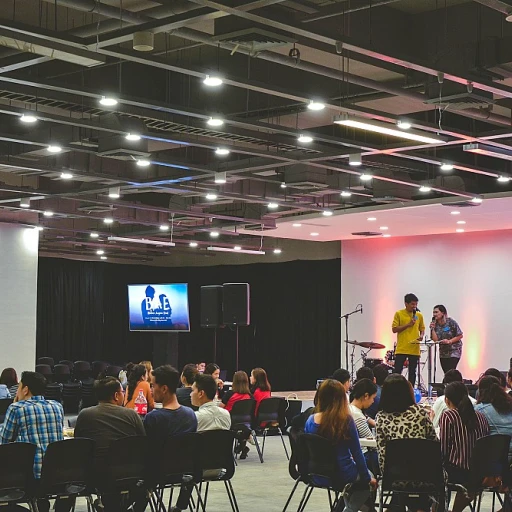The Evolving Role of the CHRO
The Changing Landscape of CHRO Responsibilities
The role of the Chief Human Resources Officer (CHRO) has undergone a significant transformation, reflecting the dynamic nature of today's business environment. Gone are the days when CHROs were merely administrators of employee benefits and arbiters of workplace policies. They are now pivotal in steering organizational strategy, driving innovation, and fostering a workplace culture that encourages growth and inclusivity. In their evolving roles, CHROs are tasked with more than keeping the HR department functioning smoothly—they are expected to bring strategic insights that align with the company’s broader business goals. This involves developing fresh approaches to harness the power of data-driven insights and implementing digital transformation initiatives within HR to better serve employees and the organization as a whole. For an expansive view on how innovation strategies specifically apply to the realm of human resources, consider exploring the importance of innovation strategy in HR. As CHROs continue to evolve in this strategic capacity, they also remain deeply committed to enhancing employee engagement and fostering an inclusive workplace. The pressure to recruit, develop, and retain talented individuals in a competitive marketplace means they are also involved in leadership and talent development initiatives, ensuring that a pipeline of future leaders is always in place. The modern CHRO, therefore, plays a multifaceted role that is integral to an organization’s ability to keep pace with rapid changes and disruptions in the business world, making them indispensable in crafting the strategies that shape a company’s future.Data-Driven Insights in HR
Leveraging Data for Strategic HR Decision-Making
In today's rapidly changing business environment, the role of the Chief Human Resources Officer (CHRO) is expanding and becoming more complex. One significant aspect of this evolution is the use of data-driven insights to enhance strategic decision-making within HR departments. HR professionals now have access to a plethora of data sources that can inform a wide range of strategic initiatives. Collecting and analyzing HR data enables organizations to forecast workforce trends, gauge employee satisfaction, and measure productivity levels. By leveraging these insights, CHROs can ensure that their strategies are closely aligned with organizational goals and contribute effectively to the overall business strategy. For instance, predictive analytics allows HR teams to identify potential skill gaps well before they impact business operations, facilitating timely learning and development interventions. Furthermore, retention analytics can help pinpoint the root causes of attrition, allowing CHROs to implement targeted strategies to foster employee engagement, as explored in other sections of this blog. The digital transformation in human resources that accompanies this data-driven approach is not just about implementing new technology; it's about fostering a culture that values and utilizes data as a key asset. By embedding data analytics into the core of HR functions, organizations can unlock new efficiencies and drive stronger performance outcomes. As these data-driven strategies continue to evolve, organizations must remain agile, enabling their CHROs to adapt and innovate continually. The ability to interpret vast amounts of data and translate it into actionable insights is no longer optional—it is essential for driving successful and sustainable HR strategies. Data-driven insights are revolutionizing the traditional HR landscape, empowering CHROs to act as strategic partners within their organizations. Embracing this paradigm shift will be critical for organizations seeking to maintain a competitive edge in an increasingly data-centric world.Digital Transformation in Human Resources
Embracing Technology to Revolutionize HR
A new era has dawned for human resources, with digital transformation at its core. CHROs are at the forefront of adopting cutting-edge technologies to streamline processes, enhance decision-making, and ultimately drive organizational success. The shift towards digital-first strategies in HR is monumental and requires a keen understanding of emerging technologies and their applications. Organizations are leveraging platforms such as artificial intelligence (AI) and machine learning (ML) to revolutionize HR operations. These technologies are pivotal in automating routine tasks, analyzing large datasets, and providing predictive insights, thus empowering HR leaders to make informed decisions. The integration of AI and ML in HR systems not only improves efficiency but also ensures that human resources are focused on strategic initiatives rather than administrative drudgery. Furthermore, cloud-based HR platforms are transforming the way organizations manage human capital. These platforms offer scalable solutions that promote flexibility and accessibility across different regions and time zones. Such a setup enables seamless collaboration and ensures that HR teams can efficiently handle the complexities of a global workforce. Incorporating digital tools into HR also facilitates better employee experience. Mobile technology, for instance, provides employees with access to essential HR services on-the-go, from submitting leave requests to accessing pay stubs. This level of convenience fosters a stronger connection between employees and their organizations. To stay ahead in the digital age, CHROs must also focus on innovation strategies in human resources. These strategies are pivotal in embracing digital transformation and ensuring that organizations remain competitive in today's fast-paced environment. By incorporating innovative tools and methodologies, HR leaders can transform their departments into agile, forward-thinking units that drive business success.Enhancing Employee Engagement
Creating a Thriving Workplace Environment
Employee engagement is becoming a pivotal element in the evolving landscape of human resources strategies. As organizations strive for success, a dynamic workplace environment is integral to achieving not just productivity, but also innovation and sustained growth. The Chief Human Resources Officer (CHRO) plays a crucial role in fostering this atmosphere, ensuring that employees feel valued, motivated, and connected to the company's purpose. In previous sections, we've explored how CHROs are leveraging data-driven insights to make informed decisions, as well as embracing digital transformation to streamline HR processes. These advancements set the stage for spearheading effective employee engagement initiatives. Engagement strategies require a keen understanding of the workforce's needs and aspirations, coupled with the ability to creatively address them. This means going beyond traditional perks and benefits; it requires nurturing a sense of belonging and purpose amongst team members at all levels. Central to enhancing engagement is the cultivation of clear and open communication. CHROs can prioritize transparent two-way communication channels, empowering employees to voice their ideas and concerns, which not only boosts morale but can also provide valuable insights into improving organizational practices. Additionally, providing opportunities for professional growth and development can significantly bolster engagement. As covered in our section on leadership and talent development, facilitating continuous learning and career advancement helps in maintaining a competitive and motivated workforce. Investing in training that aligns with individual career goals, along with providing challenging and meaningful projects, can invigorate employees toward achieving their fullest potential. The incorporation of technology, as mentioned in our digital transformation discussion, further supports these engagement efforts. Innovative tools can offer personalized and flexible work arrangements, catering to the evolving preferences of the modern workforce. Such adaptability not only enhances worker satisfaction but also attracts top talent in today's competitive job market. Employee engagement is not a one-size-fits-all solution; rather, it requires a tailored approach that takes into account the diverse needs of the workforce. By crafting a strategy that focuses on personal and professional fulfillment, CHROs can significantly influence the overall company culture positively, making the organization a desirable place to work and grow.Diversity, Equity, and Inclusion in the Workplace
Driving Inclusion by Embracing Diversity
A cornerstone of modern HR strategies lies in fostering an environment that thrives on diversity, equity, and inclusion (DEI). As workplace demographics continuously evolve, CHROs are called to redefine how organizations embrace these values, ensuring they're woven into the very fabric of company culture. Successfully implementing DEI initiatives not only aligns with ethical standards but also enhances company performance by tapping into a wider range of perspectives and ideas. In line with the previous discussions about the role of data and digital transformation, leveraging data-driven insights is crucial in identifying disparities and opportunities within the workforce. Employee demographics, retention rates, and engagement scores provide valuable indicators for evaluating the success of DEI programs or identifying areas for improvement. Furthermore, technology offers CHROs innovative tools to create digital platforms that support inclusive collaboration and communication among geographically dispersed teams. In this context, digital transformation isn't solely about adopting new technologies—it's about creating inclusive virtual spaces where every voice can be heard in a participative manner. As CHROs focus on enhancing employee engagement, fostering an inclusive workplace culture becomes pivotal. It empowers employees by affirming that their unique contributions are valued and respected, ultimately driving higher productivity and satisfaction levels. Leadership and talent development programs play a key role here by offering training and opportunities that underline the importance of DEI, nurturing future leaders who are equipped to carry these values forward. In conclusion, advancing DEI initiatives within HR strategies is not a mere checkbox exercise; it's an ongoing commitment to building a workplace where everyone feels valued and empowered to contribute their best. By skillfully integrating data, digital innovations, and inclusive leadership, CHROs can steer their organizations toward a future marked by resilience and success.Leadership and Talent Development
Nurturing Tomorrow's Leaders
In the dynamic landscape of human resources, the Chief Human Resources Officer (CHRO) plays a pivotal role in shaping the future of leadership and talent development. As organizations continue to evolve, the need for innovative strategies to cultivate leaders who can navigate complex challenges becomes increasingly crucial.
Leadership development is no longer a one-size-fits-all approach. Today's CHROs must tailor programs that are as diverse as the workforce itself, taking into account the unique strengths and potential of each employee. This personalized approach not only fosters growth but also aligns with the broader goals of diversity, equity, and inclusion, as discussed earlier in the series.
Moreover, integrating data-driven insights into leadership development programs can provide a more comprehensive understanding of an employee's capabilities and potential. By leveraging analytics, CHROs can identify high-potential individuals and create targeted development plans that address specific skills and competencies.
Digital transformation in HR also plays a significant role in modern leadership development. With the advent of virtual training platforms and AI-driven assessment tools, organizations can offer flexible, scalable, and engaging learning experiences that cater to the evolving needs of their workforce.
Finally, enhancing employee engagement is a critical component of effective leadership and talent development. Engaged employees are more likely to take on leadership roles and contribute to a positive organizational culture. By fostering an environment where employees feel valued and motivated, CHROs can ensure a steady pipeline of future leaders ready to drive the organization forward.








